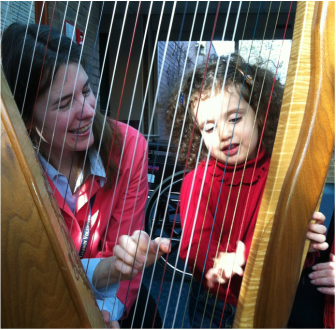|
I offer educational programs especially tailored for general assemblies, music classes, band or orchestra students, and religious school groups.
Contact me about scheduling a visit with your classroom. |
One of the most ancient of instruments,
the harp is also one of the rarest. Most people have never heard a harp played, let alone had the chance to play one themselves. When the harp is brought into a classroom, every student (and even the teacher) is mesmerized with the instrument and becomes engaged by asking questions and listening to the sounds of the harp. Taught in a hands-on style, everyone gets a chance to pluck a string and feel the vibrations of sound reverberating through the instrument.
Here are some interesting facts to consider:
|
Laura Goldstein

